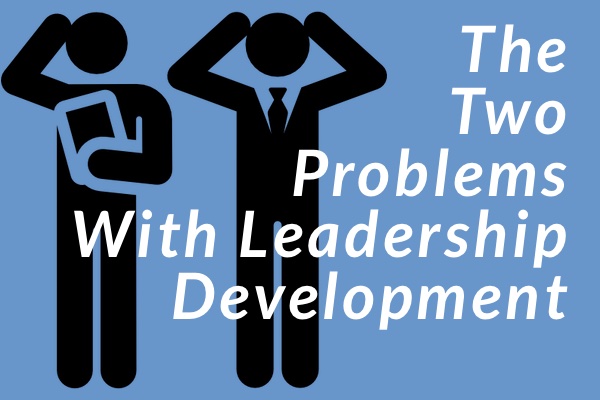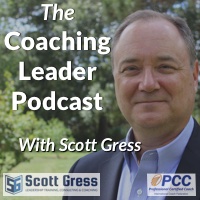
The world is full of leaders. Some good, many average and a few not good at all. The world of books, videos, websites, podcasts and other resources are full of material. There are a multitude of schools and classes and programs for leadership development. John Maxwell, leadership author, has rightly said that “everything rises and falls on leadership.” Yet why is it that we yearn for good leaders and leadership? How come leadership development is lacking? We see it in the many churches, schools, ministries, and organizations etc. that are struggling and even dying. So with so many resources…what is the problem?!
Problem Number One:
Have you ever turned on your television and surfed through the menu of channels, which on some satellite, cable or streaming systems can reach into the thousands, and you had trouble making a choice? The problem isn’t that there’s nothing on. The problem is that there are too many choices. The problem is dubbed “over choice.” Psychologists have labelled it “decision paralysis.”
This points to the first problem with leadership development: where to start? There are so many options! Knowing where to start for you and then having to go and find it can paralyze your progress. If the world is your oyster, then how do you choose what you most want or need right now?
In order for leaders to develop and continue to develop, we need help narrowing down where to start and where to focus our efforts. We need customization. We don’t want to go to a class, read a book or listen to a podcast if it is going to miss the mark. That is a waste of valuable time.
So What Can Be Done?
“Where does it hurt?” When you go to the doctor, you often hear them ask that question. It is a typical diagnostic question that begins to narrow it down. That question is often followed up with other questions and likely a number of diagnostic tests such as blood tests, cat scans, x-rays, MRI or other numerous options. This takes a lot of time but it is all necessary in order to know what to do to make things better.
Often with leadership development we throw a dart at the leadership development map and say, “Oh, ok, let’s start here.” Meanwhile “here” may be irrelevant to making one a better leader. Leadership is a huge subject. There are a multitude of facets to the diamond of leadership. The choice of where to start can be overwhelming and paralyzing. But we have to know “where does it hurt.”
There are a number of tools that Human Resources or Human Capital Management have used to help in this regard. Some are the familiar personality assessments that many of us have taken over the years: Myers-Briggs inventory, DISC personality assessment, Strenthsfinders and so on. Many of these are very good and very helpful in getting a better picture of themselves and guide one to understand what they are good at and what perhaps they are not wired for. The problem with these is that while they may tell you something about yourself, they are less helpful with pinpointing how one can get better at leadership specifically.
One type of assessment that gets closer is an Emotional Intelligence (also known as EQ or EI) questionnaire. That helps to identify emotional self awareness and self management in the context not only of self but also that of a group. Then armed with this knowledge one can focus their efforts to grow and get better. EQ is one area where we are not “hard wired” but it is an area in which can grow when we put forth the effort.
That is certainly a part of leadership. Yet even that doesn’t say clearly to you, “Hey, you need to communicate better with your organization” or “You need to be much more clear about your vision.” The answer is a simple tool to help leaders self assess their strengths and weaknesses in leadership. There are a few good choices out there but one such tool is the Leadership Assessment Wheel. It is something that guides you into thinking through what you may need.
Problem Number Two:
Have you ever had your fly open and didn’t know it? You walked around all day talking to people and it was right there. Open. So embarrassing! The same thing can happen with leadership. Everyone may know that the leader hides in their office behind the computer desk but the leader thinks they are being productive. Or, everyone knows the leader avoids the tough conversations with the one person who makes life miserable for the rest. But the leader thinks it’s not that bad or may not know at all.
This is the second problem with leadership development: If the first is a self assessment of where to start, the second is an assessment of the leader by others. It reveals the leader’s blind spots. They have things that are unknown to them but known to others. Unless they become aware of the problems they won’t address them. So how do you do that? Some organizations have a brave and courageous administrative assistant who will speak the truth to the leader. Most do not. Some subordinates will pull the leader aside and tell them the hard truth. Most don’t. The problem is that what is unknown to the leader but known to everyone else is often so obvious that people can’t imagine the leader doesn't know! The conclusion is that the leader must know and so their behavior, or lack thereof, must be intentional. But it is a blindspot. They need help.
So What Can Be Done?
One way around this is to administer what is known as a “360.” As in 360 degrees. This is the idea that you intentionally receive input from all of those around you: your boss, your subordinates, your team members, administrative assistant, or anyone who interacts with you on a regular basis. They answer questions about you and it helps to affirm where you are stronger and identify where you may need work. Seeing a pattern in what people say can be very informative and overcome denial. Then when combined with a partnership to improve with those who share their opinions, it can be a powerful catalyst for healthy growth.
The answer to both of these problems is a simple tool, where first you evaluate yourself as leader and then hand out this tool to those around you for their feedback. Then take the time to read, mark, learn and inwardly digest what it says. Follow up interviews and conversations are standard menu items as well. Then there are careful action plans with continued communication with the team so they can encourage, affirm, notice the changes and believe that they are not just window dressing. What is also powerful is that when you engage in such a process, you can encourage the team to pick something to work on as well. You will all be in it together!
This is where the Leadership Assessment Wheel also comes in. It covers four leadership categories (self-leadership, leadership mindset, leadership behaviors and leadership communication) with three sub categories in each. Taken as a personal assessment, then also as a 360 assessment it will solve the "overchoice" or "decision paralysis" problem in leadership development and used fully it can transform your organization.
God bless your leadership development! Contact me to talk about it more.
Scott specializes in leadership coaching, consulting, coach and leadership training. He is called by Lutheran Counseling Services and partners with the FL-GA District of the Lutheran Church and others as an independent contractor. Listen to The Coaching Leader podcast and contact Scott to continue the conversation or experience a free sample coaching session. scottgress@me.com or scottgress.com. Check out his YouTube channel and new online Church Leadership Training at scottgress.teachable.com
"Coaching leaders of leaders"
Check out the: Coaching Leader Podcast!

